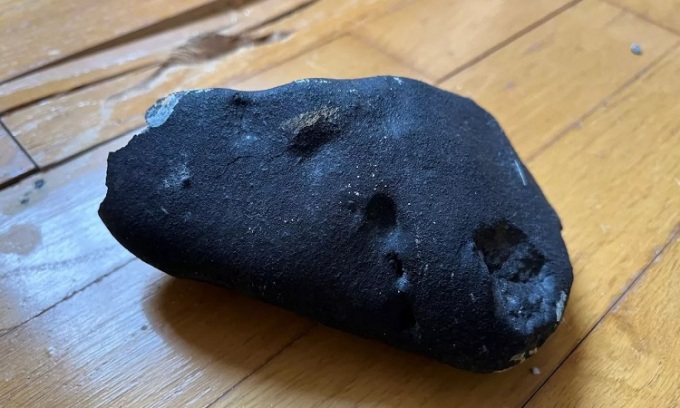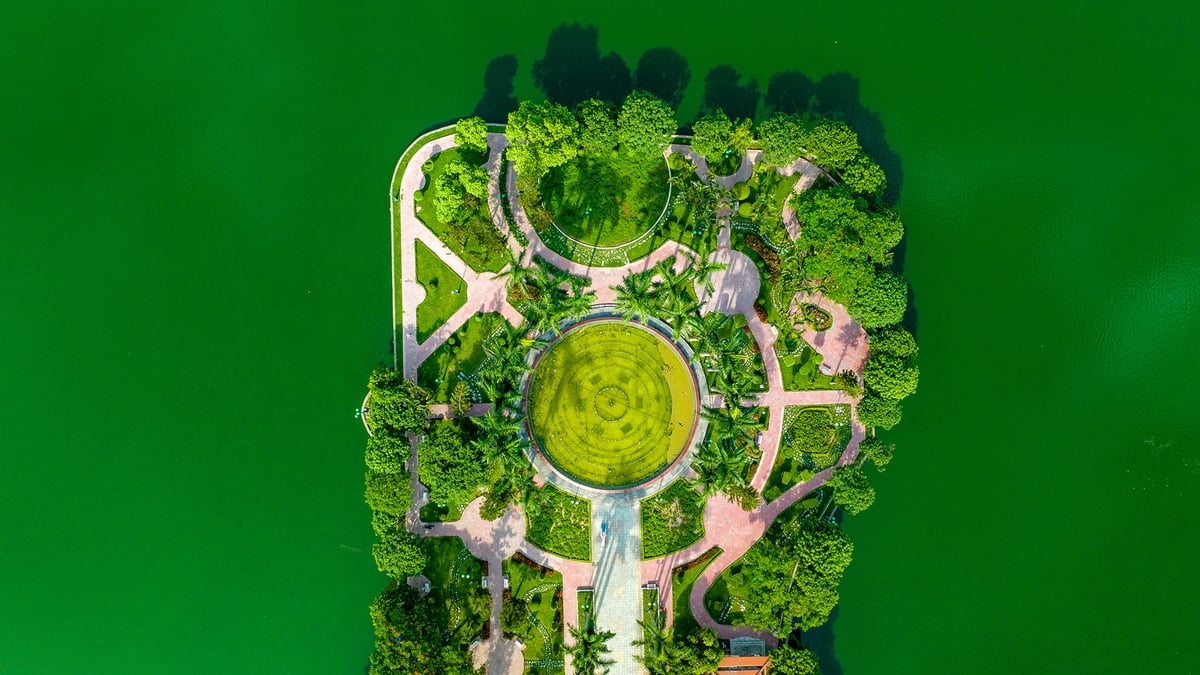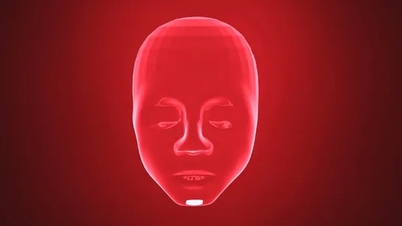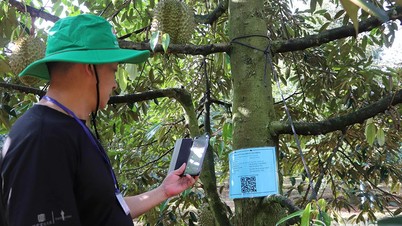The nearly one-kilogram meteorite that crashed through the roof of a New Jersey resident's home belongs to the chondrite group of rocks that have existed since the formation of the Solar System.

The meteorite has a dark outer layer due to burning up in the atmosphere. Photo: Hopewell Police Department
Experts have confirmed that a metallic-looking rock that crashed through a Hopewell, New Jersey, home earlier this week is a rare meteorite about 4.6 billion years old, Space reported on May 13. "From the outside, it's clearly a stony chondrite," said Nathan Magee, chair of the physics department at the College of New Jersey (TCNJ). Hopewell police contacted Magee shortly after the rock was found on May 8.
Chondrites are a primitive type of rock that makes up 85 percent of meteorites found on Earth. The vast majority of chondrites have been found in Antarctica, and specimens that fall into residential areas are rare. The New Jersey rock, which measures 6 inches (15 centimeters) long and 4 inches (10 centimeters) wide, is an exception. It crashed through the roof of a Hopewell home, embedded in the floor, punching two holes in the ceiling, and was still warm when resident Suzy Kop discovered the object in her father’s bedroom on the afternoon of May 8. After emergency crews cleaned up the toxic radioactive residue from the house, Kop turned the meteorite over to a nearby university for further examination.
At TCNJ, Magee’s team consulted Jerry Delaney, a retired meteorite expert who worked with the collection at the American Museum of Natural History in New York. The team determined that the meteorite was about 4.6 billion years old, meaning it had existed since the beginning of the solar system. The 2-pound meteorite will likely be named Titusville, after the closest location to where it fell. The specimen is in perfect condition and is one of the few witnessed chondrite falls ever recorded, according to Magee.
The meteorite has a dark crust several millimeters thick, due to partial burning in Earth's atmosphere. Using a hand lens designed to closely examine the rocks, Magee and his colleagues found that the meteorite's minerals were blue and gray, with small amounts of other metals mixed in.
The team studied the rock's texture and composition by placing it in a large chamber of a scanning electron microscope. Based on initial estimates, the meteorite is a chondrite of the LL-6 class, which contains less iron than other members of its family and is 30 to 40 percent less dense than most common rocks on Earth, such as slate or granite. So it's clearly not a rock from Earth.
Before a meteorite passes through Earth's atmosphere, it is exposed to so much heat from space that its structure and composition change so much that it is difficult to distinguish the chondrules that make up the meteorite.
An Khang (According to Space )
Source link

























































![[Maritime News] Wan Hai Lines invests $150 million to buy 48,000 containers](https://vphoto.vietnam.vn/thumb/402x226/vietnam/resource/IMAGE/2025/6/20/c945a62aff624b4bb5c25e67e9bcc1cb)














![[Infographic] Party Committee of the Ministry of Culture, Sports and Tourism: Marks of the 2020 - 2025 term](https://vphoto.vietnam.vn/thumb/402x226/vietnam/resource/IMAGE/2025/6/22/058c9f95a9a54fcab13153cddc34435e)


























Comment (0)